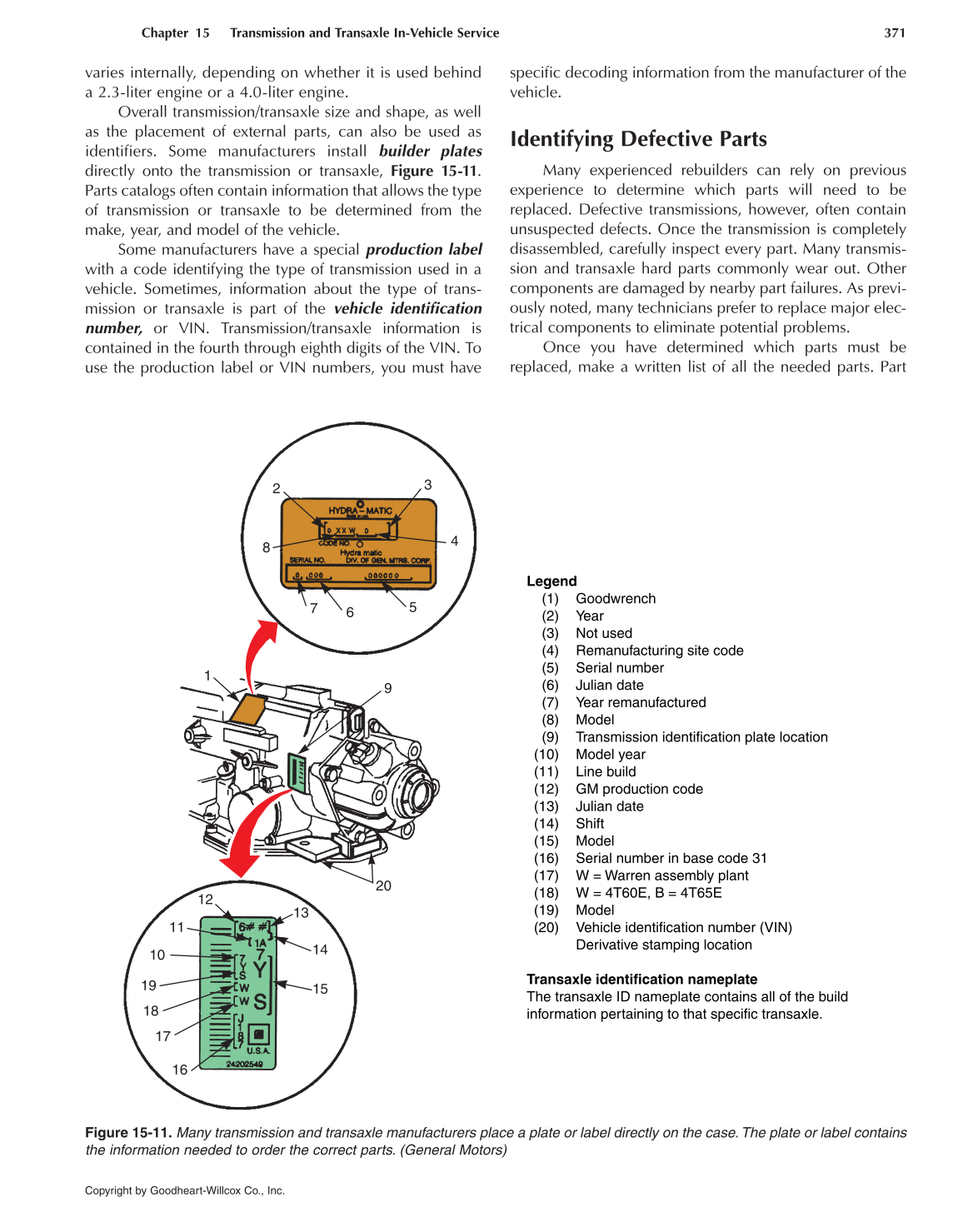Copyright by Goodheart-Willcox Co., Inc.
Chapter 15 Transmission and Transaxle In-Vehicle Service 371
12
13
14
15
11
10
19
18
17
16
20
9
5
6
7
8
2
3
4
Legend
(1) Goodwrench
(2) Year
(3) Not used
(4) Remanufacturing site code
(5) Serial number
(6) Julian date
(7) Year remanufactured
(8) Model
(9) Transmission identification plate location
(10) Model year
(11) Line build
(12) GM production code
(13) Julian date
(14) Shift
(15) Model
(16) Serial number in base code 31
(17) W = Warren assembly plant
(18) W = 4T60E, B = 4T65E
(19) Model
(20) Vehicle identification number (VIN)
Derivative stamping location
Transaxle identification nameplate
The transaxle ID nameplate contains all of the build
information pertaining to that specific transaxle.
1
Figure 15-11. Many transmission and transaxle manufacturers place a plate or label directly on the case. The plate or label contains
the information needed to order the correct parts. (General Motors)
varies internally, depending on whether it is used behind
a 2.3-liter engine or a 4.0-liter engine.
Overall transmission/transaxle size and shape, as well
as the placement of external parts, can also be used as
identifiers. Some manufacturers install builder plates
directly onto the transmission or transaxle, Figure 15-11.
Parts catalogs often contain information that allows the type
of transmission or transaxle to be determined from the
make, year, and model of the vehicle.
Some manufacturers have a special production label
with a code identifying the type of transmission used in a
vehicle. Sometimes, information about the type of trans-
mission or transaxle is part of the vehicle identification
number, or VIN. Transmission/transaxle information is
contained in the fourth through eighth digits of the VIN. To
use the production label or VIN numbers, you must have
specific decoding information from the manufacturer of the
vehicle.
Identifying Defective Parts
Many experienced rebuilders can rely on previous
experience to determine which parts will need to be
replaced. Defective transmissions, however, often contain
unsuspected defects. Once the transmission is completely
disassembled, carefully inspect every part. Many transmis-
sion and transaxle hard parts commonly wear out. Other
components are damaged by nearby part failures. As previ-
ously noted, many technicians prefer to replace major elec-
trical components to eliminate potential problems.
Once you have determined which parts must be
replaced, make a written list of all the needed parts. Part
